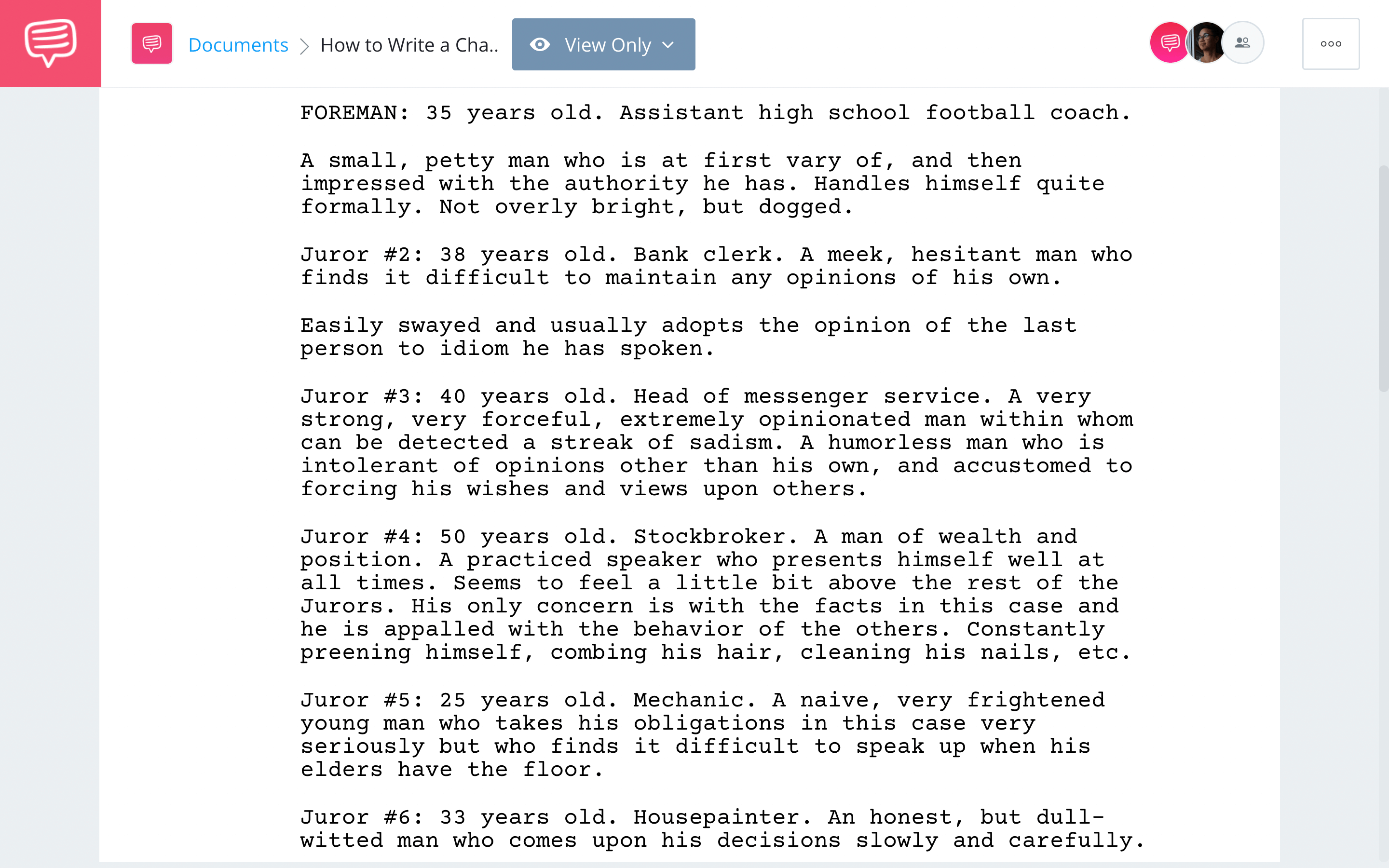Character breakdowns are used by casting directors during the pre-production phase of film production to gauge the defining character features that writers/directors are looking for. We’re going to show you how to write a character breakdown for a script so that you can organize your character descriptions in one place. By the end, you’ll know how to write a character breakdown for a script that grabs the attention of actors and readers.
How to Do a Character Breakdown
Primer on character breakdowns
Character breakdowns are important documents for writers, casting agents, and actors. Essentially, they’re one-stop shops for character details and potential shooting schedules. Let’s listen to casting director Melanie Forchetti explain why character breakdowns are important.
Film Character Breakdowns • How to Write a Character Breakdown for a Script by Backstage
Organization is key in film production. Why? Because there’s a lot of ways things can get lost. Character breakdowns allow casting directors to stay on top of their assignment in pre-production. They also allow writers/directors to communicate exactly what they’re looking for in actors.
Script Character Breakdown Examples
Write a character glossary
Character glossaries, which are referred to as dramatis personae in classic stageplays, are lists of characters in stories, accompanied by brief descriptions. Although less common in screenwriting practice today, character glossaries still serve a purpose in writing character breakdowns. Essentially, they’re a place for you to put all of your character breakdowns in one place.
Take the 12 Angry Men script for example, which we imported into StudioBinder’s screenwriting software to see how character glossaries should look. Pay attention to how each character is given a brief physical/emotional description. Click the image to read the entire selection.
Character Breakdown Examples • How to Write a Character Breakdown for a Script via 12 Angry Men
In this example, we’re given brief character breakdowns for all the major players in the story. It can be incredibly helpful to have a place for all of the character breakdowns to go; therein lies the utility of glossaries.
Film Character Breakdown Details
Give production information
If you know when/where you’re shooting or performing, then you should specify it on the character breakdown. It doesn’t have to be anything extravagant – simply state the time and location with the title of the production.
It might look something like this:
PRODUCTION NAME
@ the [Blank] theater in [Blank city], June 1 - June 14
Doing this will:
a) Give actors ample notice on whether or not their schedules interfere with the production
b) Further organize your production’s itinerary
c) Reduce wasted time by way of auditioning actors who have schedule conflicts
If you don’t know when/where your production will be taking place, then just be honest about it with the talent. Production schedules change all the time – your job is to simply do your part to keep things on track.
How to Write a Character Breakdown for a Script Tips
Communicate physical descriptors
This tip can be a bit of a double-edged sword. Of course, you want to cast the right person – but you don’t want that to restrict you from auditioning a wide breadth of actors. The best rule of thumb is to write an approximate age-range with some physical descriptors. For example:
Jefferson: 40s. Slender and slight of frame.
Important note: only communicate physical descriptors like “slender and slight of frame” if they’re important to the character. This way, you won’t get somebody ill-fitted for the role just due to their natural body disposition. Not everybody is willing to go Christian Bale for the role – and that’s a good thing.
Simple Character Breakdown Examples
Include essential aspects of character
The second part of character breakdowns are the emotional sections that give actors an idea of the role they’re trying to play. This is where you communicate who the character is, what they care about, and why they’re at a point of conflict. For example, if we’re sticking with the character from earlier, it might look something like this:
Jefferson: 40s. Slender and slight of frame. Trash collector. Malnourished and impoverished; exhausted from worsening insomnia. His job is soul-sucking and it’s beginning to show.
In this breakdown, we get an idea of how old Jefferson is, what he does, and why his body disposition is important to his character. Let’s try another, this time with a character less-heavy.
Lauren: 30s. Stand-up comedian. Larger than life personality. Naturally exuberant yet slightly awkward. Always ready for a party, not always ready for the hangover that comes with it.
Here, we’re told that Lauren is a dominant character. She works in a profession that relies on being loud, which suits her emotional disposition.
It really is that simple. When writing your own character breakdowns for casting (or to accompany script sides), remember to tell us only what’s most important about the character. Don’t worry about leaving details out – you have a whole screenplay to fill actors in on the subtleties.
Up Next
How to Introduce Characters in a Script
Character breakdowns are used in the pre-production phase of a film’s development to explain who characters are and what defines them. Screenwriters use a similar process to communicate essential aspects of character in screenplays as well.
In our next article, we’ll explain how to introduce characters in a screenplay, with examples from Inception, The Game, and more.

